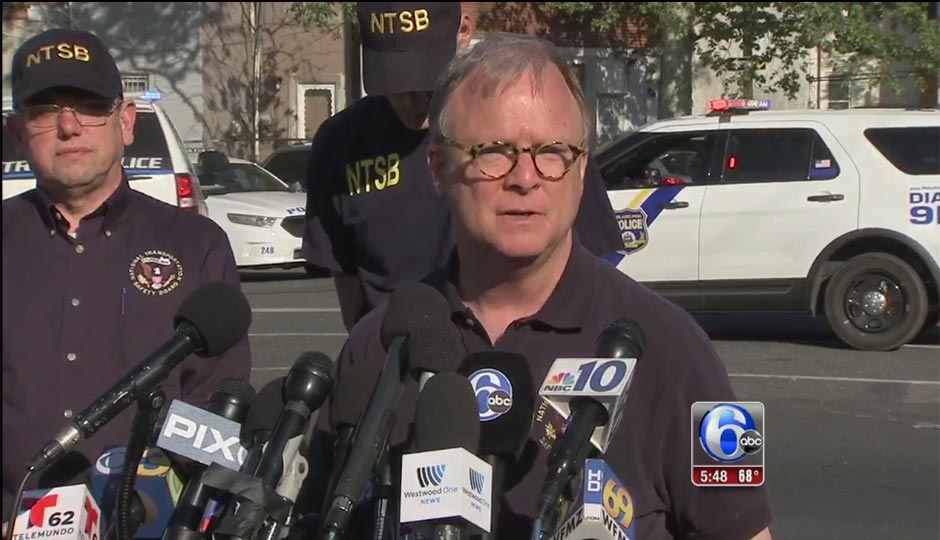NTSB: Derailed Amtrak Train Went From 70 to 100 MPH in 49 Seconds
The engineer of the Amtrak train that crashed in Philadelphia on Tuesday night has agreed to be interviewed by the National Transportation Safety Board, according to officials.
At a Thursday evening news conference, lead investigator Robert Sumwalt said the NTSB plans to meet with engineer Brandon Bostian in the next few days. Sumwalt said the train was traveling at 100 miles per hour — twice the speed limit — immediately before it derailed.
“We feel that that interview will provide us a lot of information,” said Sumwalt.
Bostian’s lawyer, Robert Goggin, told ABC’s “Nightline” that the engineer “has absolutely no recollection of the incident or anything unusual.” The NTSB allows anyone it interviews to bring along one representative, which can include a lawyer, friend or spouse.
Sumwalt provided a timeline of the crash at the press conference. He said officials were able to determine the chronology by examining a train video that was “good quality” up until the point of derailment.
He said the video showed that 65 seconds before the end of the recording, the train’s speed exceeded 70 miles per hour; 43 seconds prior, it exceeded 80 miles per hour; 31 seconds prior, it was going 90 miles per hour; and 16 seconds prior, it “was going through 100 miles per hour.”
That means the train went from 70 to at least 100 miles per hour in 49 seconds.
Asked by a reporter whether he would consider that rate of acceleration “rapid,” Sumwalt declined to speculate.
“I think that’s a subjective evaluation, what’s rapid and what’s not,” he said. “I’ll just lay the figures out there and let them stand on their own.”
He said investigators do not know yet whether the train’s speed was increased manually or through some other mechanism.
“At this point, we don’t know that,” he said. “We think that we will be able to when we interview the engineer. We would like to find out those types of things, but just from the track image recorder, it just shows the speed alone. So it doesn’t show how the speed got there.”
Sumwalt said the NTSB has already interviewed an Amtrak manager and train dispatchers overseeing the train, and has completed a 3-D laser scanning of the first two cars.
Officials plan to do a “site distance test” in the next week.
“That’s basically where we’ll take an exemplar train under similar lighting and environmental conditions,” said Sumwalt, “and see how far out that curve would come into vision.”
Sumwalt also noted at the press conference that the engineer’s drug and alcohol results are not in yet.
Follow @HollyOtterbein on Twitter.



